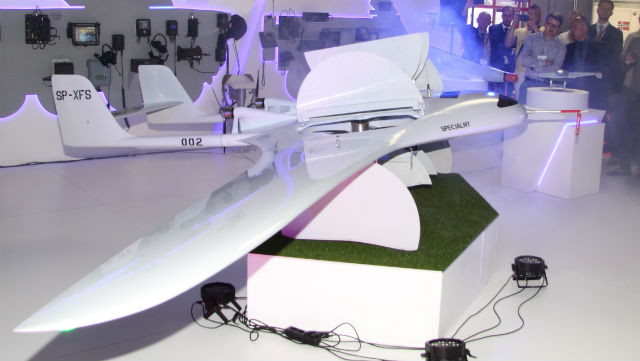Poland’s WB Group has unveiled a new version of its Manta tactical unmanned air vehicle. The development is capable of vertical take-off and landing (VTOL), which the company says would enable it to be operated from areas with limited space, such as an urban environment, the deck of a ship or a building roof.
Displayed at the MSPO exhibition in Kielce, the Manta is powered by lift fans installed in its fuselage. The covers for these are opened during take-off and landing, enabling airflow to be directed according to operator needs. Its hybrid power system uses four electric engines and an onboard generator powered by a combustion engine.

Bartosz Glowacki
The operational radius for the VTOL Manta is cited as 81nm (150km), with a 6h endurance and a service ceiling of 16,400ft. With an empty weight of 70kg (154lb) and a maximum take-off weight of 140kg, it has a 6.6m (21.6ft) wingspan and a fuselage length of 3.3m.
A Polish-designed autopilot will enable operators to perform flights using a pre-programmed route, with mission updates and real-time route changes performed from a ground controller by the use of a touch-screen display.
While the UAV is intended primarily to carry reconnaissance sensors, the version unveiled at the show was armed with a Sting gliding bomb. WB Group officials say the Manta could carry up to eight of the weapons, and that engineers are currently developing a Sting 2 version with more destructive force.

Bartosz Glowacki
The VTOL Manta is among the systems being offered to the Polish armed forces in a tender for a tactical short-range UAV. All elements of the product were developed in the country, including its airframe, sensors, data link, navigation systems and software, WB notes.
Source: Flight International






















